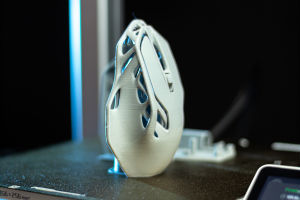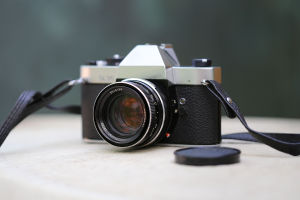Augmented Reality Art
The world of art is continually evolving, influenced by technological advancements and shifting cultural trends. One of the most exciting innovations in recent years is the integration of augmented reality (AR) into art exhibitions.
AR has already revolutionized various sectors such as entertainment, education, and marketing, but its application in the art world is a game-changer.
Imagine stepping into an art gallery where the walls come to life, or where static sculptures reveal hidden layers when viewed through a mobile device. Augmented reality is opening up new dimensions for how we experience and engage with art. What does this mean for artists, curators, and visitors alike? Let's explore this exciting development.
What is Augmented Reality?
Augmented reality is a technology that overlays digital content—such as images, sounds, or videos—onto the real world. Unlike virtual reality (VR), which immerses users in a completely digital environment, AR enhances the physical world with interactive digital elements.
This fusion of the digital and physical realms creates an immersive experience where users can interact with the augmented content in real-time. In the context of art, AR has the potential to completely transform how we perceive and engage with artworks.
Using AR, artists and galleries can superimpose digital artwork onto physical canvases, create virtual 3D sculptures, or even allow visitors to experience a painting in ways never before possible.
With the help of smartphones, tablets, or AR glasses, visitors can point their devices at a piece of art and see it come to life with dynamic animations, additional layers of information, or interactive features.
How AR Enhances Art Exhibitions
Augmented reality offers unprecedented opportunities for enhancing art exhibitions. One of the most significant benefits is the ability to add layers of information to a piece of art.
For example, by pointing a smartphone at a painting, a visitor might see an animated version of the piece's creation process, hear the artist discuss their inspiration, or even view the piece in a historical context. These digital additions not only make the artwork more engaging but also help provide deeper insights into the artist's intentions and the context behind the piece.
In addition to this, AR can bring static pieces to life. Imagine a sculpture that appears still and lifeless, but when viewed through an AR lens, it begins to move, revealing intricate patterns or hidden components that would otherwise be invisible to the bare eye. The potential for creating interactive, evolving artworks adds an exciting dimension to art exhibitions, where viewers are no longer passive observers but active participants in the artistic experience.
Changing the Role of the Viewer
In traditional art exhibitions, viewers are often limited to simply observing the artworks on display. However, augmented reality allows for an entirely new type of interaction, where the audience becomes a part of the artwork.
With AR, visitors can engage with the art in a more personalized way, shaping their own experience by choosing what they want to explore, how they interact with the artwork, and when they choose to reveal hidden elements.
This shift in the viewer's role can make art more accessible, breaking down barriers between the art and the audience. For instance, viewers with no prior knowledge of art history can use AR to instantly access background information about the artwork or artist.
By providing a more interactive and tailored experience, AR has the potential to make art exhibitions more inclusive, engaging a broader audience and enhancing visitors' overall understanding and enjoyment of the works on display.
AR in Public Art and Street Exhibitions
While traditional galleries have been at the forefront of AR applications in art, augmented reality is also being used in public art installations and street exhibitions. Street art, murals, and sculptures can all be enhanced with digital layers that tell stories, provide context, or invite passersby to interact with the art in new ways.
These virtual layers can create an immersive experience that surprises and delights, encouraging people to engage with art in everyday spaces.
Public installations can be brought to life through AR by allowing viewers to see how a sculpture or mural evolves over time or how it responds to environmental factors such as weather or lighting. In this way, AR allows for the creation of dynamic, ever-changing art that adapts to its surroundings, making it possible for public art to transcend its physical limitations and provide a more engaging and innovative form of expression.
Challenges in Implementing AR in Art Exhibitions
Despite the excitement surrounding AR in the art world, there are some challenges to overcome. One of the primary obstacles is the need for technology infrastructure.
For AR to work effectively, visitors need access to smartphones or AR glasses, which can sometimes limit accessibility, particularly in museums or galleries where technological resources are scarce. Additionally, not all visitors are familiar with AR or comfortable using it, which may pose a barrier to those who are not tech-savvy.
Another challenge is the need for specialized knowledge and skills to create AR-enhanced art. Artists, curators, and exhibition designers need to be well-versed in the technical aspects of AR to seamlessly integrate it into the exhibition. This requires a blend of creative and technical expertise, which may necessitate collaboration between artists, designers, and technologists.
Moreover, as the art world embraces AR, there are concerns about the impact of technology on the authenticity of art. Some critics argue that the digital enhancement of art could detract from the original, physical experience of viewing art in person. However, proponents of AR suggest that it can enhance and complement traditional art rather than replace it, offering a new layer of interaction that can enrich the viewing experience.
The Future of AR in Art Exhibitions
The potential for augmented reality in art is vast, and we are only scratching the surface of what is possible. As the technology continues to evolve, we can expect even more exciting developments in the way AR is used in art exhibitions.
For example, future innovations may allow for multi-sensory experiences, where visitors can not only see and hear the art but also touch or smell elements that are digitally enhanced. Such innovations could make the viewer's engagement with art even more immersive and dynamic.
Moreover, as AR becomes more widespread, it could help transform the way art is distributed and consumed. Virtual exhibitions and online galleries could incorporate AR to provide an immersive, interactive experience for remote viewers, opening up access to art for people who may not be able to visit physical exhibitions. In this sense, AR could play a crucial role in democratizing art and making it more accessible to a global audience.
Conclusion: Embracing the Future of Art
Augmented reality is undoubtedly ushering in a new era for art exhibitions. By enhancing the way we interact with and experience art, AR is creating new possibilities for artistic expression, engagement, and understanding.
As technology advances, the integration of AR in art will only deepen, offering richer, more immersive experiences for viewers and artists alike.
As visitors step into a gallery where the artwork evolves before their eyes, or where the line between the physical and digital worlds blurs, they are witnessing the future of art unfold. Are you ready to experience art in a whole new way? The era of augmented reality in art exhibitions has arrived, and the possibilities are endless!
Contact to : xyjph123@gmail.com
Privacy Agreement
Copyright © boyuanhulian 2020 - 2022. All Right Reserved.
Privacy Agreement
Copyright © boyuanhulian 2020 - 2022. All Right Reserved.


